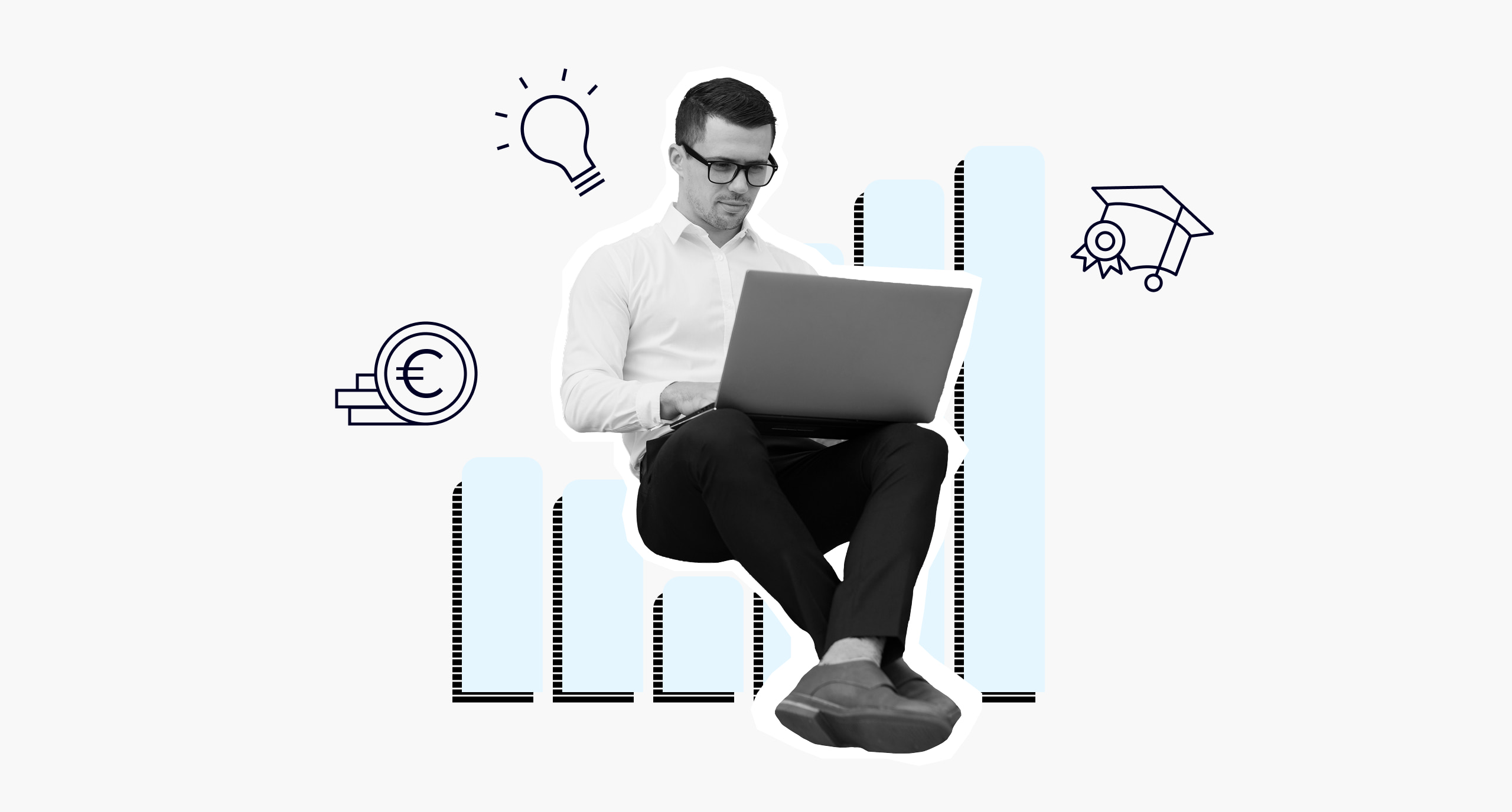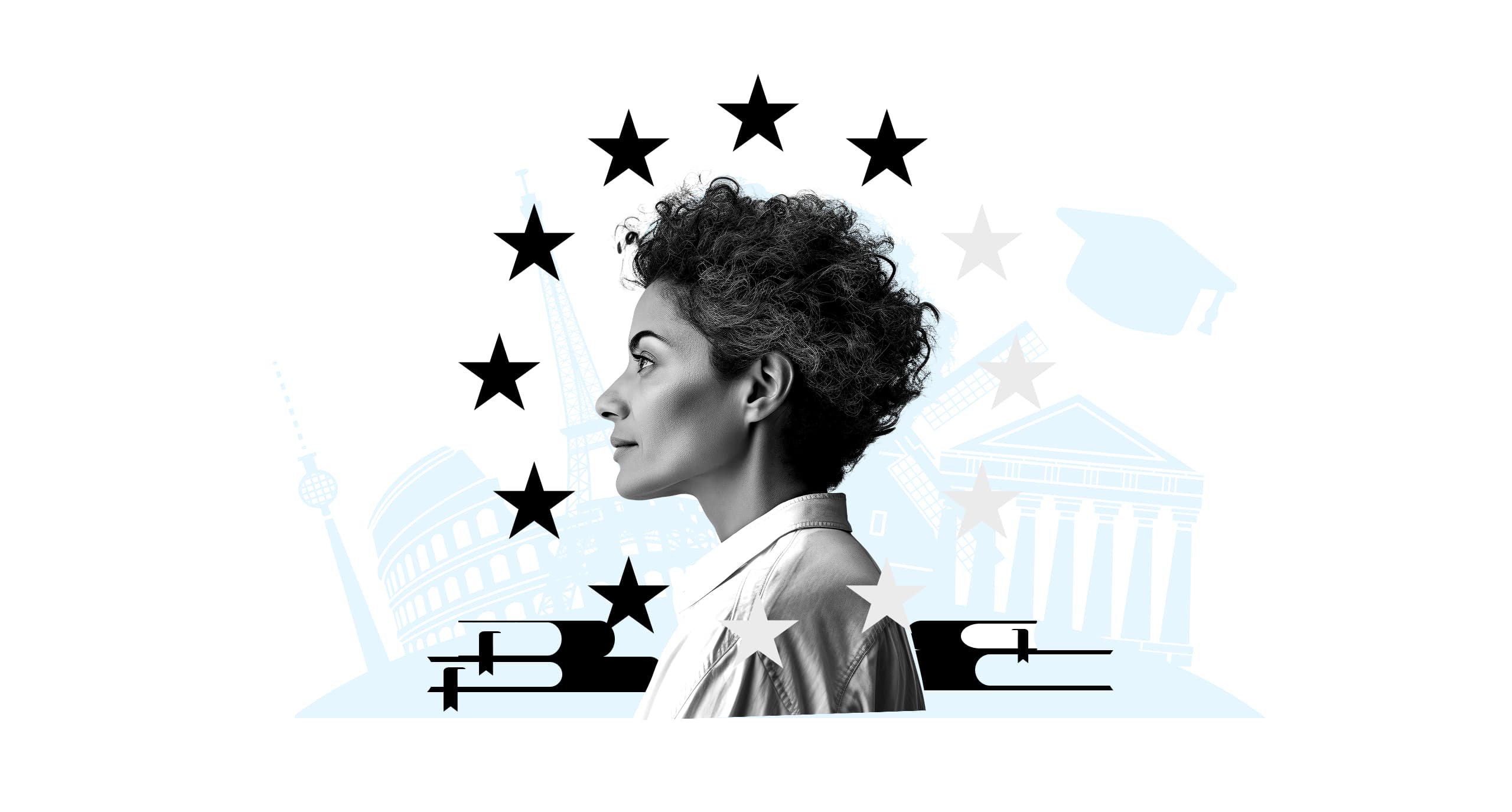The Master in Digital Business & Innovation equips students with the strategic and technological skills needed to lead digital transformation. Merging digital business strategy with emerging technologies, students gain hands-on knowledge that prepares them to hit the ground running in the real world.
The program’s culminating Capstone Project is all about bridging this gap. Putting new skills into practice, students finish this project by providing real solutions for businesses. This year, the cohort created Samsung AI chatbots to enhance the company’s customer service as part of the project’s Consulting Challenge.
Here’s how it went.
Presenting custom Samsung AI chatbots to decision-makers
In the recent Capstone Samsung Business Challenge, students worked in teams to deliver real consultancy services. Building on the theoretical frameworks taught throughout the master’s program, this course focuses on diagnosing client problems, designing actionable recommendations and delivering a professional final pitch.
Throughout 20 sessions, students engaged in live discussions, workshops, mentoring sessions and iterative project development, culminating in a final presentation to a panel of industry experts and academic staff.
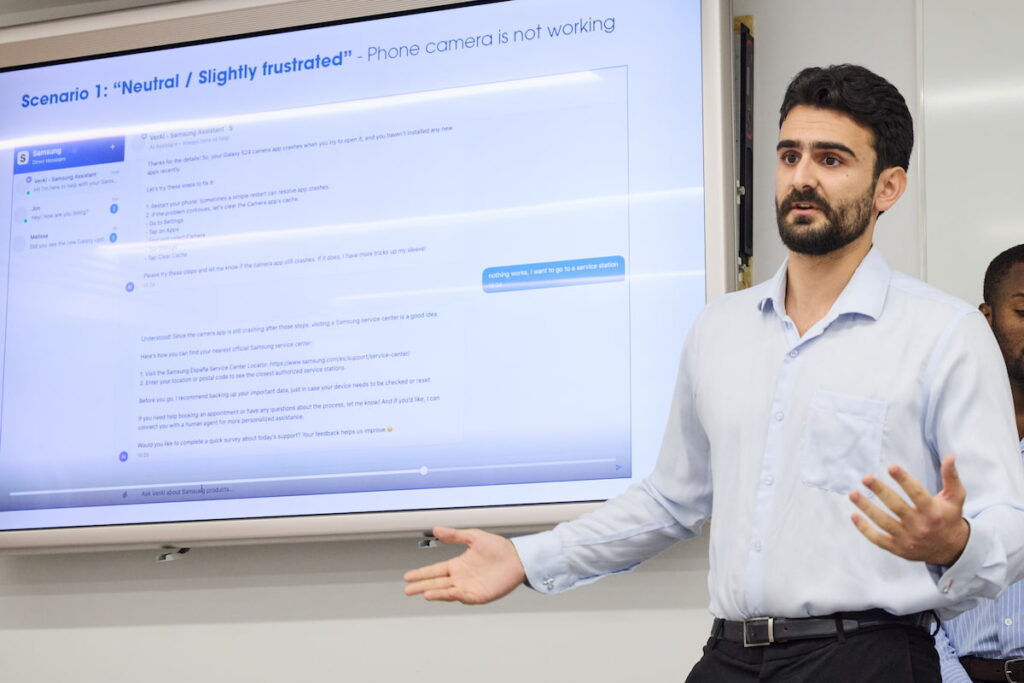
1. Analyze Client Business Needs: Utilize diagnostic frameworks and digital tools to identify key business challenges.
2. Develop Strategic Solutions: Formulate and present actionable consulting recommendations based on industry best practices.
3. Manage Consulting Projects: Apply agile methodologies and iterative approaches to execute effective consulting engagements.
4. Communicate and Present Effectively: Structure, negotiate and deliver consulting proposals with clarity and impact.
5. Leverage AI and Digital Tools: Utilize AI-driven insights responsibly to enhance data analysis, strategic decision-making, and client solutions.
Each group presented their own take on the Samsung AI chatbots. The teams used a range of tools including OpenAI, Lovable, Supabase, UiPath to bring their vision to life.
Speedy responses
One team identified a key pain point in that Samsung receives a high volume of repetitive queries—many outside business hours—which leads to delays and inconsistent responses. This team’s proposal aimed at reducing response times and improving user satisfaction by automating responses to common issues. These included product questions, troubleshooting and warranty inquiries. The proposed Samsung AI chatbot cut total incoming queries by 39% and reduced response times by up to an hour.
Built using Make and integrated with Google Sheets, the backend ensures transparency and ease of monitoring for internal teams. The client described the proposal as being the foundation of a “professional-grade solution” that addresses around 75% of their core customer support challenges.
Adjusting tone
Another project introduced Sami, who catered for Gen Z and Gen Alpha by creating a Samsung AI chatbot that responded in seconds, using guided troubleshooting in Samsung’s tone of voice. Built using Instagram DMs, Google Sheets, and ChatGPT APIs, Sami runs sentiment analysis and delivers contextual, real-time responses without storing personal data. The team backed the chatbot with a go-to-market strategy targeting a €6–8 million segment and a four-phase launch plan tied to product releases and TikTok-driven engagement.
The client asked if Sami could adjust its tone for angry customers, to which the team explained each message is assigned a sentiment score between -1 and 1, allowing the bot to tailor its tone accordingly. Samsung praised this foresight, noting it addressed a key factor tested during their own trials with more extreme customer scenarios.
Speaking the consumer’s language
Another product aimed to capture the energy of Gen Z and Gen Alpha, with playful features like “Yoda mode,” which activates when users say “May the force be with you.” The rollout strategy was nonetheless substantial, centering on social media engagement through platforms like Instagram, TikTok, and TeenZon. Their proposal was positioned as a high-return investment, with a projected break-even point within 12 to 18 months and a five-year ROI of 272%, generating over €1.6 million in net benefits. With a user-friendly design, training, human support and strong data protection, the multilingual chatbot promised to be more than a support tool; they sought to “redefine the Samsung experience” by offering fast responses 24/7 in a tone that resonates with a younger, digital-native audience.
The client challenged what was a strong presentation by expressing concern about maintaining the brand’s voice, emphasizing that it should be “simple but clear”. During feedback, the team also added that the chatbot could handle questions about promotional offers, with the ability to search for current offers online.
Catching up with the students after the presentations
After weeks of hard work and iteration, the final presentations offered a clear view into how deeply the student teams engaged with the challenge. Ishan Juneja reflected on how the process began: “They gave us a high-level issue, but we had to dive much deeper. Once we really understood the problem, everything started to build from there.” Angela Gabrielle Castillo agreed, saying the key was in recognizing real user frustrations. “At first, we thought we were just building a chatbot,” said Angela. “But the turning point came when we realized why it needed to exist.”
The project itself provided plenty to learn beyond the coursework.
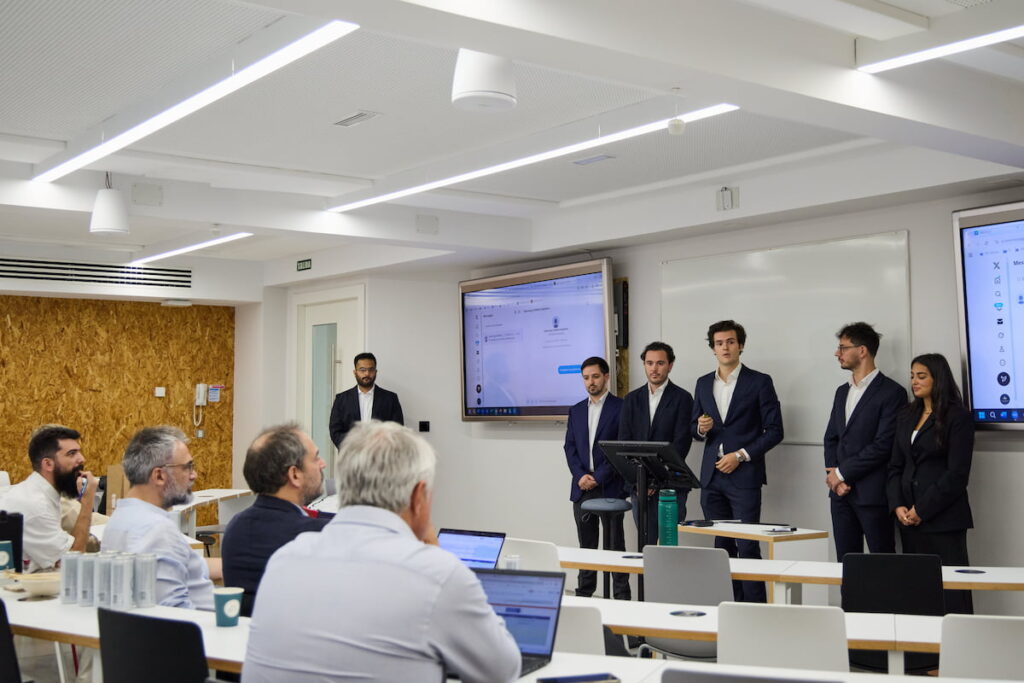
“None of us came in with the technical knowledge,” said Ishan admitted. “But we worked together, figured it out, and by the end we were confident with everything we’d built.” Giana Kahil’s team even had to face real-time issues before the presentation. “Our bot stopped working right before we went on,” said Giana. “But we kept calm, used the backup, and it all worked out.” Angela also felt learning under pressure was central to the experience: “We had this project, seven other subjects, and eight different groups. Honestly, I think we just learned how to survive.”
All valued the opportunity to collaborate with their peers. Giana emphasized that her team blended business and tech roles to create something cohesive: “We didn’t all work the same way, but we balanced each other out.” And by the time presentations wrapped, the relief was palpable: “Once we got into it, it became easy. Everyone was smiling—that was super reassuring.”
Study the Master in Digital Business & Innovation
The Master in Digital Business & Innovation is an 11-month, full-time program based in Madrid that equips students with the strategic and technological skills needed to lead digital transformation in today’s tech-driven economy. The program bridges digital business strategy with emerging technologies, covering areas such as digital operations, smart data, automation, and business process redesign.
Participants gain hands-on knowledge in key disciplines like project management, supply chain optimization, and digital sales.
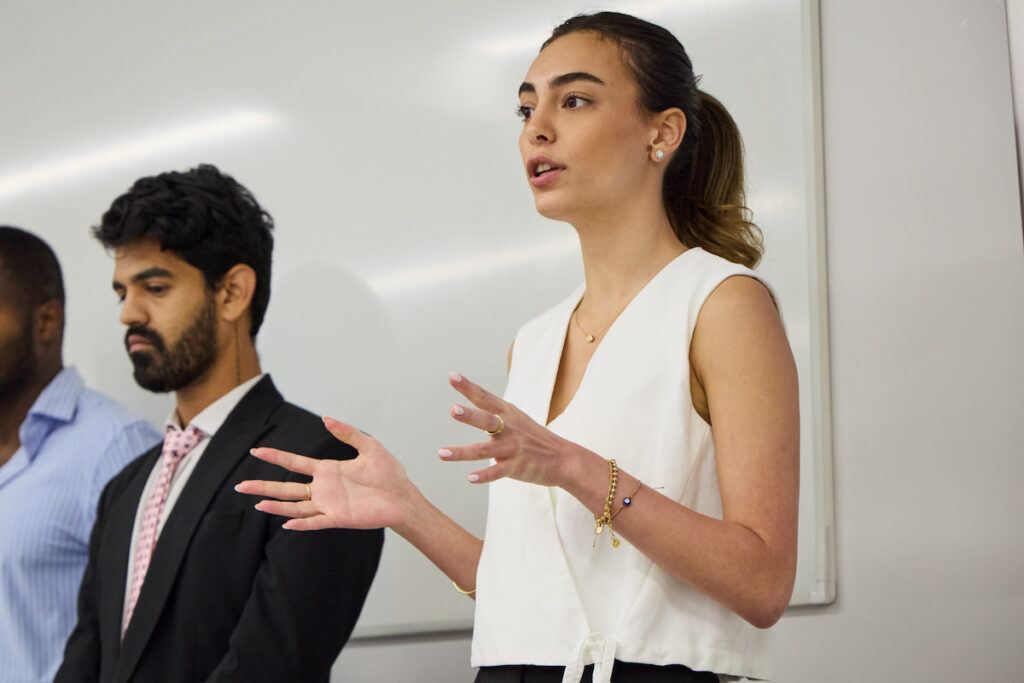
Structured around a core curriculum followed by specialized tracks and electives, students can tailor their learning in fields like AI-powered analytics, digital strategy, fintech, or entrepreneurship. The program also offers a Global Immersion Week in leading tech hubs like London or Amsterdam, along with career-enhancing certifications in cloud computing, sustainability, and Salesforce—boosting graduates’ appeal to top employers worldwide.
The Capstone Project in three phrases
Let’s zoom in on the Capstone Project & Consulting Challenge for a moment. The three-phase course is their opportunity to put everything they’ve learned into action. They design, test and refine a digital venture while also tackling a real-world consulting challenge for an industry partner. These projects are designed to stretch their entrepreneurial mindset and strategic thinking in practical, high-impact ways.
Capstone I: Digital Venture Ideation & Feasibility
In this first phase, they take a structured approach to identifying and validating a digital business idea. Using frameworks for trend analysis, sustainability and market research, they define their value proposition, target audience and core business model. They also outline their financial plan and learn how to pitch to investors—laying the groundwork for their venture.
Capstone II: Product-market fit & execution
Then it’s time to test their idea in the real world. They build and iterate on a Minimum Viable Product (MVP), gather customer feedback and launch their initial go-to-market strategy. Through data analysis and growth tactics, they refine their product, build traction and explore strategies for scaling and long-term sustainability.
Consulting challenge
During the consulting challenge, they tackle a real-world business challenge from an industry partner by applying their entrepreneurial mindset. They apply innovation and consulting frameworks to diagnose problems, craft actionable solutions and deliver strategic recommendations—building both their problem-solving and client management skills in a high-impact, team-based setting.
Lead digital transformation with IE Business School
From Samsung AI chatbots to finding the Next Best You, discover how the Master in Digital Business & Innovation can supercharge your skillset.
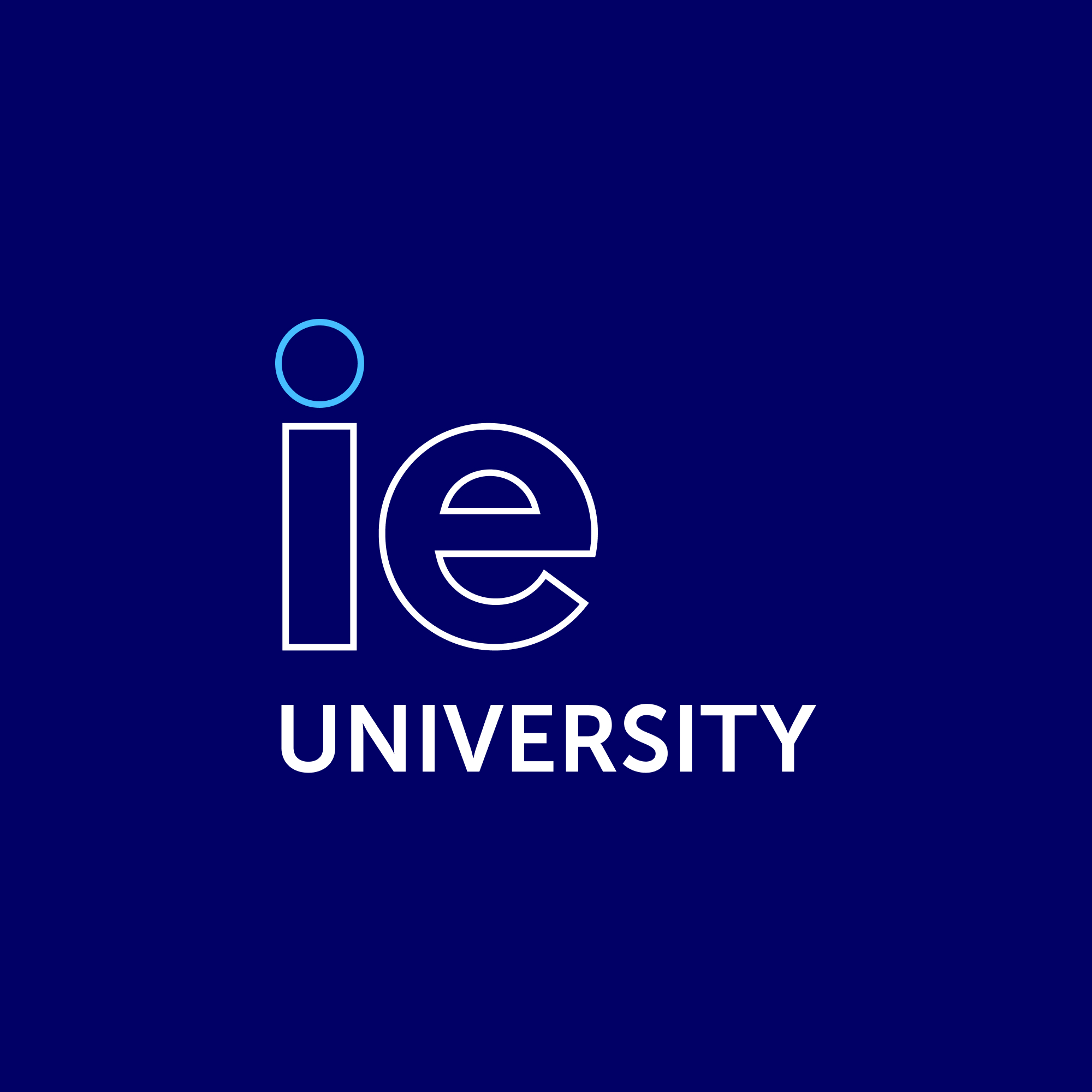
Benjamin is the editor of Uncover IE. His writing is featured in the LAMDA Verse and Prose Anthology Vol. 19, The Primer and Moonflake Press. Benjamin provided translation for “FalseStuff: La Muerte de las Musas”, winner of Best Theatre Show at the Max Awards 2024.
Benjamin was shortlisted for the Bristol Old Vic Open Sessions 2016 and the Alpine Fellowship Writing Prize 2023.



